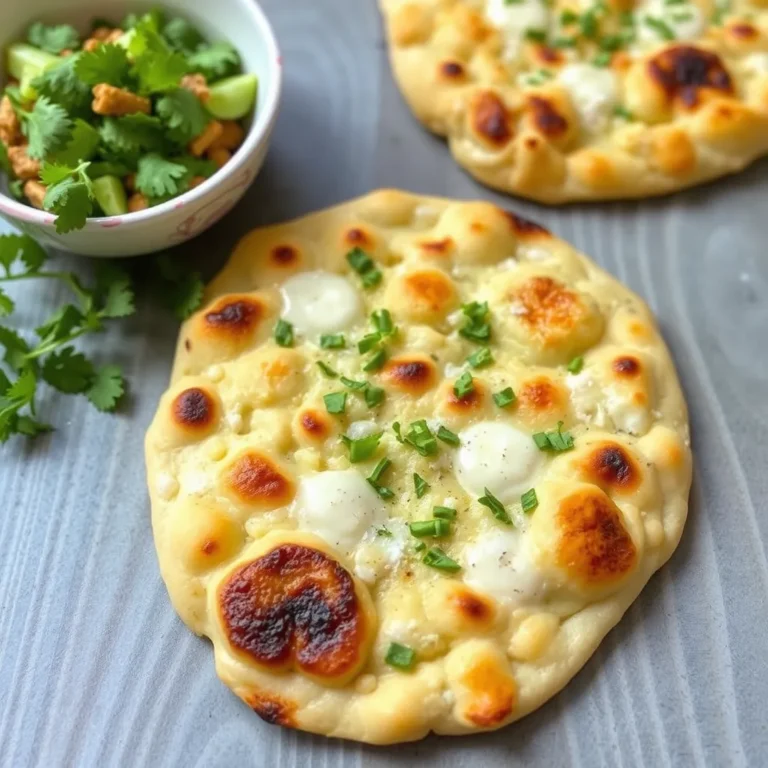Why Choose Cottage Cheese for Flatbread?
Cottage cheese is a versatile and nutrient-rich ingredient that takes flatbread to the next level. Its creamy texture and slightly tangy flavor enhance the dough’s taste, making every bite unforgettable. Compared to traditional flatbread recipes, which often rely on yogurt or milk, using cottage cheese introduces a richer, more balanced flavor profile.
If you’re looking for a protein-packed alternative that doesn’t sacrifice softness, cottage cheese is your go-to. This ingredient is especially beneficial for those aiming to incorporate more protein into their diet while enjoying a traditional comfort food.
Benefits of Cottage Cheese in Flatbread:
- Protein-rich: Ideal for fitness enthusiasts.
- Creamy texture: Improves the softness of flatbread.
- Mild flavor: Pairs well with both savory and sweet toppings.
The Nutritional Benefits of Cottage Cheese
Cottage cheese is a powerhouse of nutrients. Packed with protein, calcium, and probiotics, it supports muscle repair, bone health, and digestion. For those managing calorie intake, it’s a low-fat option compared to other dairy products.
Nutritional Highlights:
- Protein: A single cup contains approximately 28 grams.
- Calcium: Essential for strong bones.
- Low-calorie: Perfect for weight management.
Adding it to flatbread dough is a simple way to boost the dish’s health quotient without compromising flavor or texture.
Overview of Flatbread Styles Around the World
Flatbreads are an integral part of many global cuisines, showcasing their adaptability and cultural significance. From Middle Eastern pita to Indian naan, each variation tells a story of culinary heritage.
While traditional recipes rely on basic flour-water mixtures, cottage cheese flatbread is a modern twist. It combines the traditional flatbread’s simplicity with a creamy richness, offering a unique take that transcends borders.
Classic Flatbread vs. Cottage Cheese Flatbread
Traditional flatbread recipes use minimal ingredients, often resulting in a slightly chewy texture. However, cottage cheese flatbread is:
- Softer and fluffier due to the cheese’s moisture.
- Richer in protein and flavor.
- Less reliant on additional fats, making it a healthier alternative.
Ingredients Overview
Core Ingredients
- Flour: Use all-purpose or whole wheat flour for best results.
- Cottage Cheese: Opt for full-fat or low-fat varieties depending on your dietary preferences.
- Salt: Enhances the dough’s natural flavor.
- Baking Powder: Helps the dough rise slightly for a softer texture.
Optional Ingredients for Flavor Variations
- Fresh herbs like rosemary or thyme.
- Spices such as garlic powder, cumin, or smoked paprika.
- Grated cheese or finely chopped vegetables for added texture.
Choosing the Right Cottage Cheese
The quality of cottage cheese greatly impacts the dough. Look for:
- Creamy, non-watery textures.
- Varieties with minimal additives for a clean taste.
Kitchen Tools and Equipment
Essential Tools
- Mixing Bowl: For combining ingredients.
- Rolling Pin: To shape the flatbread evenly.
- Skillet or Nonstick Pan: For cooking the flatbread to perfection.
Specialty Tools for Perfect Results
- Pastry Brush: To apply oil or butter during cooking.
- Bench Scraper: For handling sticky dough.
- Cast-Iron Pan: Delivers an evenly cooked, crispy texture.
The Preparation Process
Preparing the Dough
Mixing Ingredients for Cottage Cheese Dough
Creating the perfect cottage cheese flatbread begins with the dough. Start by combining the core ingredients in a large mixing bowl. Here’s a step-by-step guide:
- Measure Ingredients: Use precise measurements for consistent results—typically, 2 cups of flour, 1 cup of cottage cheese, ½ teaspoon of salt, and 1 teaspoon of baking powder.
- Mix Thoroughly: Add the flour, salt, and baking powder to a bowl. Gradually fold in the cottage cheese, ensuring even distribution.
- Adjust Moisture: If the dough feels too dry, add water (a teaspoon at a time). If too wet, sprinkle in additional flour.
Tips for Kneading the Dough
Kneading is critical to developing the dough’s structure and elasticity. Follow these tips:
- Flour your work surface to prevent sticking.
- Use the « push, fold, rotate » technique for consistent kneading.
- Knead for about 8–10 minutes or until the dough becomes smooth and elastic.
Achieving the Right Dough Consistency
Your dough should be soft but not sticky. Test it by pressing your finger into the dough—if it bounces back slightly, it’s ready.
Resting and Shaping the Dough
Why Resting the Dough is Essential
Resting allows the gluten to relax, making the dough easier to roll out and shape. Cover the dough with a damp cloth and let it rest for 20–30 minutes. This step also helps:
- Improve texture and elasticity.
- Enhance the dough’s flavor as the ingredients meld.
Techniques for Shaping Flatbread
Shaping your flatbread evenly is key to even cooking. Here’s how:
- Divide the dough into equal portions using a bench scraper.
- Roll each portion into a ball.
- Use a rolling pin to flatten the dough into discs, aiming for ¼-inch thickness.
How to Avoid Common Dough Mistakes
- Too Sticky? Add flour incrementally while shaping.
- Tearing? Rest the dough longer to improve elasticity.
Cooking Methods for Cottage Cheese Flatbread
Pan-Cooking Techniques
A skillet or nonstick pan works best for quick and even cooking:
- Preheat the pan over medium heat.
- Lightly grease the surface with oil or butter.
- Place the flatbread on the hot pan and cook for 1–2 minutes per side, or until golden brown spots appear.
Baking vs. Stovetop: Pros and Cons
| Method | Pros | Cons |
|---|---|---|
| Stovetop | Quick, easy, and energy-efficient. | Requires close attention to avoid burning. |
| Baking | Cooks multiple flatbreads at once. | Longer cooking time. |
How to Get a Crispy Texture
- Use a cast-iron skillet for a beautifully crispy crust.
- Cook over medium-high heat to achieve browning without overcooking.
Flavor Additions and Enhancements
Adding Herbs and Spices to the Dough
For a gourmet touch, mix fresh or dried herbs into the dough. Popular options include:
- Chopped parsley or cilantro.
- Crushed garlic for a bold kick.
- Crumbled feta for a Mediterranean twist.
Incorporating Toppings Pre- or Post-Cooking
Flatbread is a blank canvas for culinary creativity:
- Pre-Cooking: Add toppings like shredded cheese, thinly sliced onions, or olives before cooking to integrate flavors.
- Post-Cooking: Finish with spreads like hummus, tzatziki, or pesto for a fresh burst of flavor.
Serving and Variations
Serving Suggestions
Best Pairings for Cottage Cheese Flatbread
Cottage cheese flatbread is versatile, making it a perfect companion to a variety of dishes. Pair it with:
- Soups and Stews: A hearty lentil soup or creamy tomato bisque complements the flatbread’s soft texture.
- Dips and Spreads: Serve alongside hummus, baba ganoush, or tzatziki for a Mediterranean-inspired meal.
- Salads: Pair with a fresh Greek salad or roasted vegetable medley for a light yet satisfying combination.
Serving as a Main Dish vs. a Side Dish
- Main Dish: Add toppings like sautéed vegetables, smoked salmon, or shredded chicken to turn your flatbread into a filling meal.
- Side Dish: Serve warm, sliced into wedges, to accompany mains like grilled chicken or roasted lamb.
Flatbread for Breakfast, Lunch, or Dinner
Cottage cheese flatbread is an all-day delight:
- Breakfast: Top with scrambled eggs and avocado.
- Lunch: Pair with a simple salad for a balanced midday meal.
- Dinner: Use as a base for mini flatbread pizzas.
Variations on the Recipe
Gluten-Free Cottage Cheese Flatbread
For those avoiding gluten, use gluten-free all-purpose flour. Adjust the liquid quantities slightly to achieve the desired dough consistency. Tapioca starch or almond flour can also enhance texture.
Vegan-Friendly Alternatives
Swap cottage cheese for a plant-based version or silken tofu blended with a splash of lemon juice for a tangy substitute. Ensure other ingredients, like flour and toppings, align with vegan preferences.
Adding Seasonal Ingredients for a Twist
Celebrate the flavors of each season by incorporating:
- Spring: Fresh herbs like dill or chives.
- Summer: Sun-dried tomatoes or grilled zucchini.
- Fall: Roasted pumpkin or butternut squash.
- Winter: Crumbled goat cheese and caramelized onions.
Storing and Reheating Flatbread
Best Practices for Storing Fresh Flatbread
Store freshly cooked flatbread in an airtight container at room temperature for up to 2 days. To maintain freshness:
- Wrap flatbreads individually in parchment paper.
- Avoid refrigeration, which can dry them out.
How to Reheat Without Losing Texture
- Stovetop: Reheat on a nonstick skillet over low heat for 1–2 minutes per side.
- Oven: Wrap in aluminum foil and heat at 300°F (150°C) for 10 minutes.
Can You Freeze Cottage Cheese Flatbread?
Yes! To freeze:
- Allow flatbreads to cool completely.
- Layer them with parchment paper to prevent sticking.
- Store in a freezer-safe bag for up to 3 months.
To reheat, thaw at room temperature, then warm in a skillet or oven.
Troubleshooting Common Issues
Why Your Flatbread Might Be Too Dense
- Possible Causes: Over-kneading or using too much flour.
- Fix: Add a tablespoon of water or olive oil to soften the dough.
Fixing Dough That’s Too Sticky or Dry
- Sticky Dough: Sprinkle in flour gradually while kneading.
- Dry Dough: Add a teaspoon of water at a time and knead until smooth.
Avoiding Overcooked or Burnt Flatbread
- Cook over medium heat for even browning.
- Monitor closely during baking or stovetop cooking to prevent burning.
- Avoid overly high temperatures, which can cook the outside too quickly while leaving the inside underdone.
More FAQs
- Can I make the dough in advance?
Yes, refrigerate for up to 24 hours. Let it sit at room temperature before rolling out. - What’s the best flour for this recipe?
All-purpose flour works well, but whole wheat adds a nutty flavor and more fiber. - Can I use flavored cottage cheese?
Yes, but reduce other flavoring ingredients to avoid overpowering the flatbread. - How do I know when the flatbread is cooked?
Look for golden brown spots and a firm, slightly puffed surface. - What toppings work best for a pizza-style flatbread?
Tomato sauce, mozzarella, fresh basil, and olives are classic options. - Can I cook flatbread without oil?
Yes, but it may lack the crispy texture oil provides. - What’s a quick way to soften flatbread that’s become dry?
Wrap in a damp paper towel and microwave for 10–15 seconds. - Can I add sweet ingredients?
Absolutely! Try cinnamon and sugar or a drizzle of honey. - What’s the ideal serving temperature?
Serve warm for the best texture and flavor. - Can I make this recipe in bulk?
Yes, double or triple the ingredients and freeze extra flatbreads for convenience.

